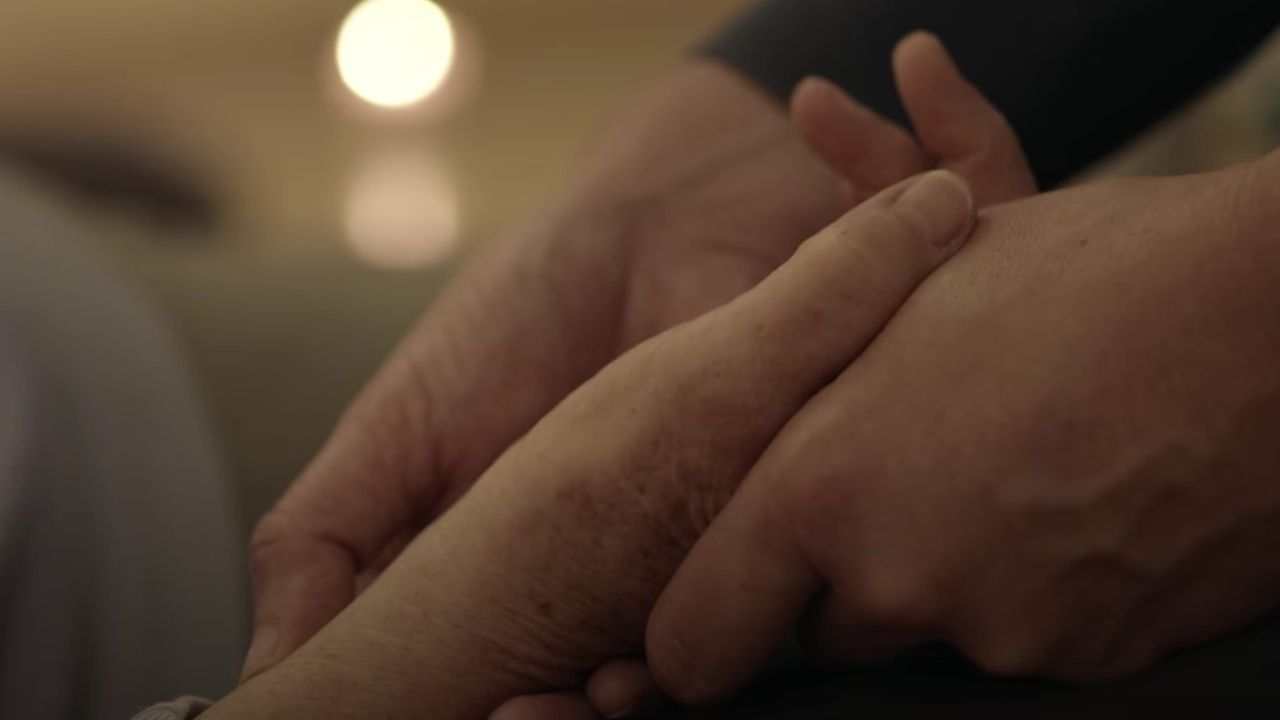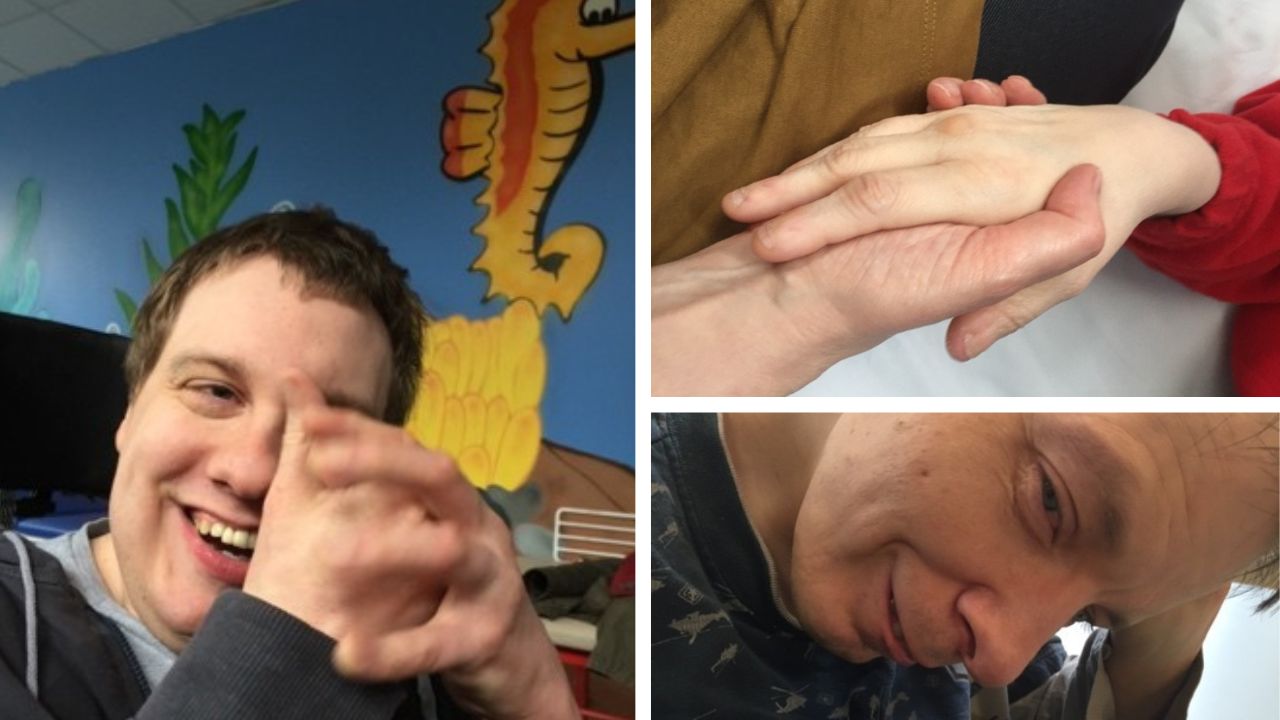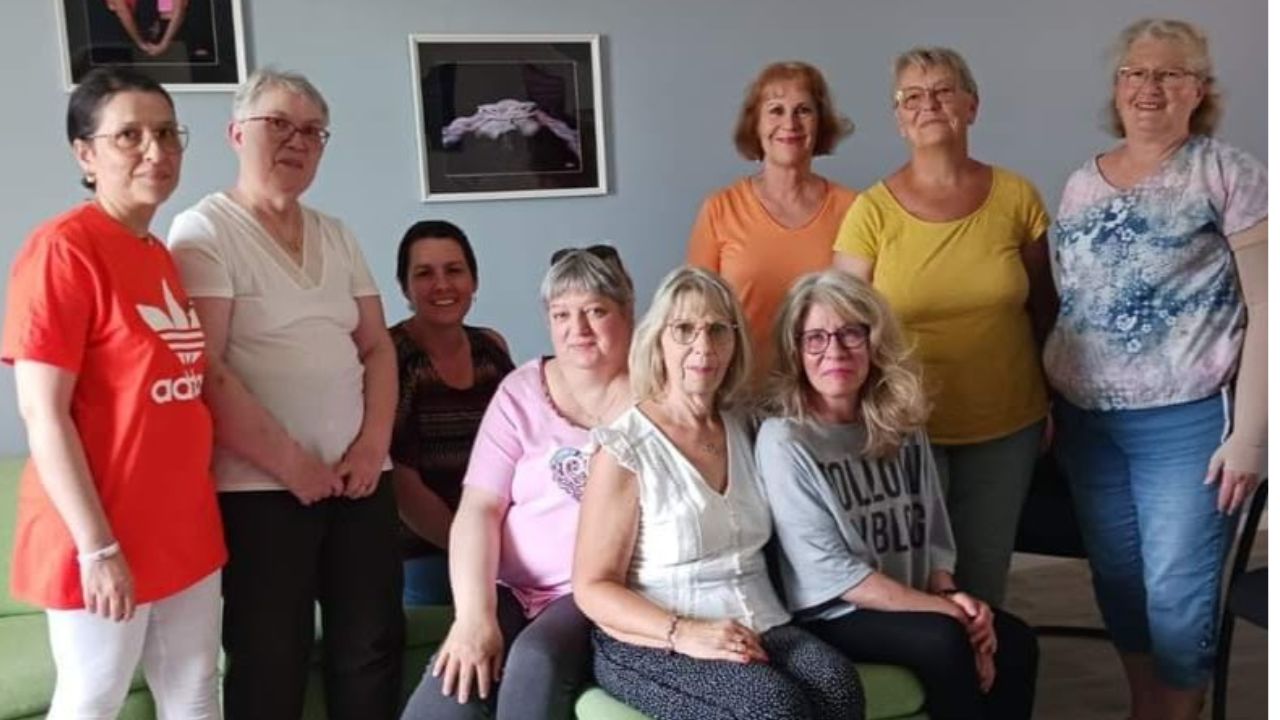
The Schneider Children’s Department of Pediatric Hematology-Oncology is the largest facility of its kind in Israel and serves as a referral center for childhood and adolescent blood and cancer diseases. The center comprises a Day Care Unit, an Inpatient Department, a Bone Marrow Transplant Unit, an Outpatient Clinic and Diagnostic Laboratories. Shiatsu was originally introduced in February, 2004. The objective was to offer Shiatsu to manage physical and mental symptoms and side effects and to improve quality of life from the first days after the diagnosis of the disease, parallel with conventional cancer treatments such as chemotherapy and radiotherapy and in the ensuing months during follow-up and maintenance.
In the Spotlight
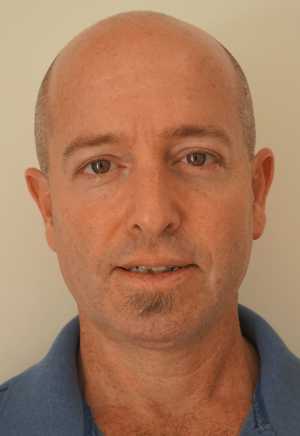
Raviv Peleg
Raviv Peleg has been practicing Shiatsu for over 20 years. He specializes in pediatric care, oncology and rehabilitation and also works with hydrotherapy and other water treatments. He is currently creating and promoting a therapeutic language to combine treatment in water and on dry land – the Shiatsu mat. Since 2011, he has been the director of complementary and integrative medicine at the Department of Oncology at Schneider Hospital. He promotes the use of complementary medicine throughout Israel by providing treatments in hospitals and other settings, planning and conducting scientific research, developing original programs and giving lectures and workshops. He currently works in 2 hospitals in an integrative oncology setting, and in a kindergarten for children recovering from cancer. He also runs a private clinic.
Foreword
Raviv has been the head of the Pediatric Integrative Oncology Program at the hospital since 2011. Currently, the department of complementary medicine has 4 therapists using Shiatsu, guided imagery, Chinese medicine and a research assistant. Treatments are free of charge but provided only for oncology patients: children of all ages from small babies to adolescents aged 20 and over. Treatment is tailored to the needs of each child, depending on how they feel each time. Treatments are also given to the parents and the department staff, both of whom consistently ask for more.
We meet children and their families from their first hours in the department, immediately after the diagnosis of the disease. We then follow them through the entire period of treatment and the subsequent months of maintenance. This time span can be two years or more and means that we get to know the children very well: the names of their pets, what they like to eat, when to talk and laugh with them and when to be silent, when they need a calm and pleasant time and when to strengthen them. The treatments are quite diverse. For example, we do active treatments where the aim is to motivate, strengthen and produce movement: walking, exercises and games, postural work, joint movement, manual therapy using resistance, strengthening of the body and limbs and more.
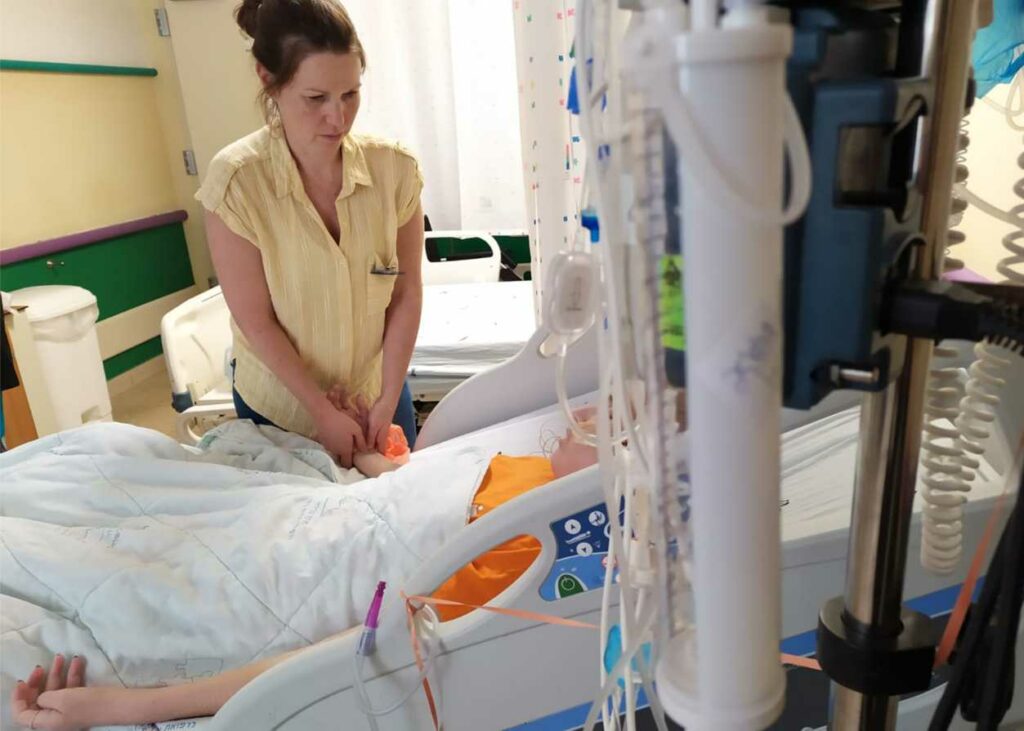
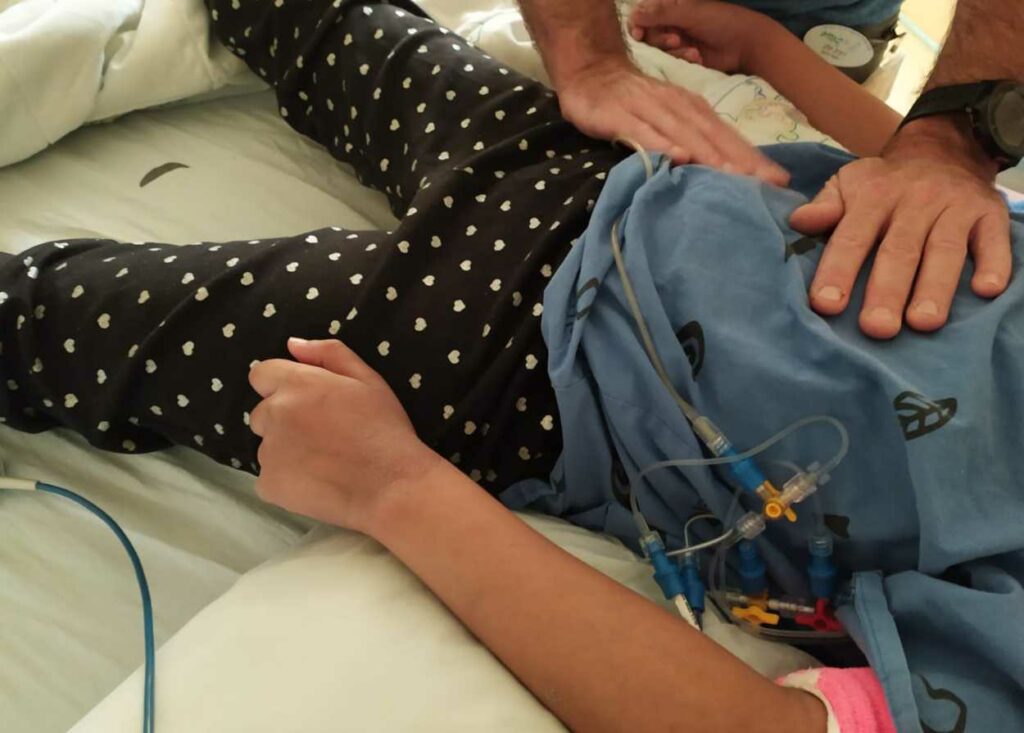
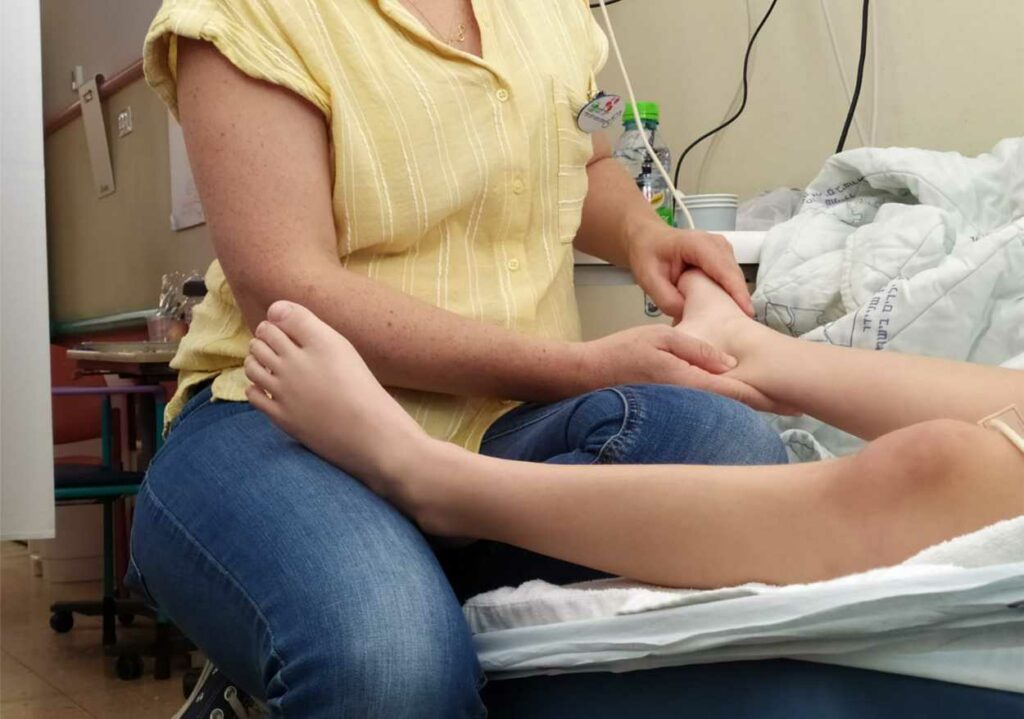
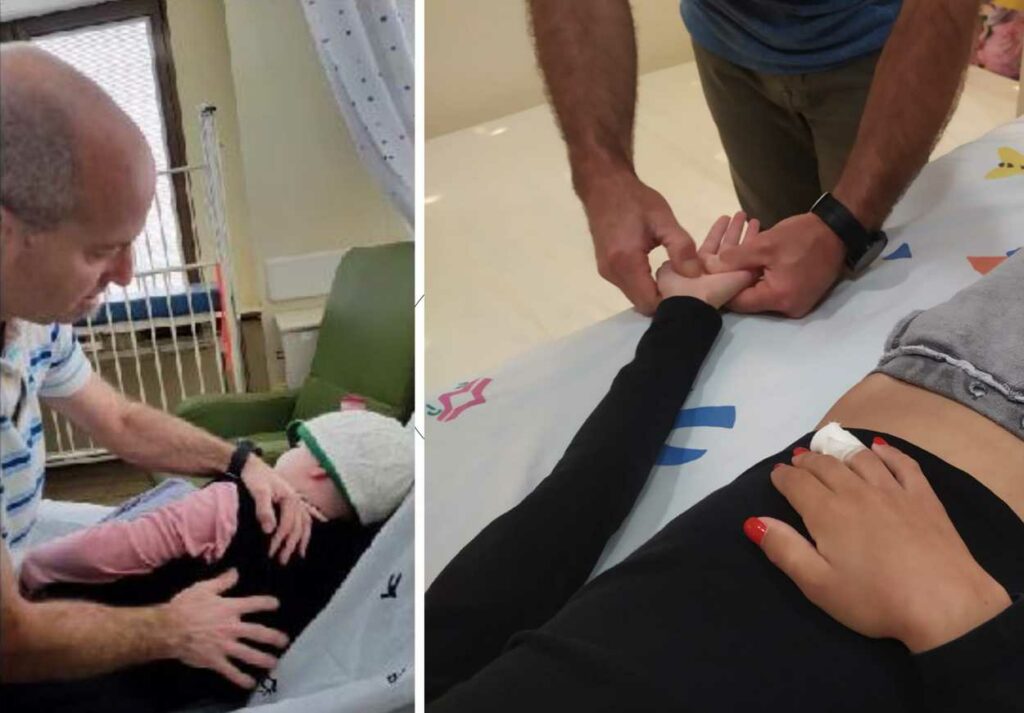
We also do passive, quiet treatments with minimal movement, where the goal is instead to calm, reduce anxiety and alleviate side effects, share, unload and encourage positive feelings. These are the two polarities and the wide range of possibilities between them allows us to meet each patient, in any health condition and at any given moment, and adjust the treatment optimally according to the child’s needs and wishes, the needs of the medical staff and the Shiatsu diagnosis. All of this demonstrates the scope and flexibility of Shiatsu.
Postface
The Shiatsu treatments have proved very successful in enhancing and harmonising reactions to the more conventional treatments: side effects and additional symptoms are significantly ameliorated, the burden of the parents is relieved and the treatment environment is generally improved. After 6 treatments, the child and/or parents fill out a questionnaire. All treatments are digitally documented, summarized and statistically analyzed to create an evidence-based database regarding Shiatsu treatment. Every 3 months, a detailed report is submitted to the medical staff.
The shiatsu treatments at Schneider Hospital were a bright spot for my daughter. Especially when it comes to pain in the joints and in general. Some of the side effects of chemo and steroid treatments are joint pain and nothing we did helped these pains other than shiatsu treatments. When my daughter was hospitalized in isolation after a bone marrow transplant and was suffering from severe pain and could not walk and talk, she asked us not to let anyone into her room, no support or medical staff, no family and no friends. The only ones who allowed them to enter her room were Yael and Raviv, the shiatsu therapists. They are the only ones who could really help her and improve her feeling in these difficult days
Thank you and we love you a lot
FEEDBACK RECEIVED BY RAVIV FROM A PARENT
